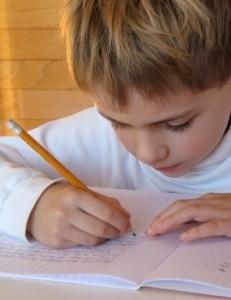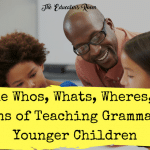 I love to teach writing to my first and second graders. These kids can spin stories like no others. The challenge lies in their fine motor skills and being able to write down all of the wonderful ideas they come up with. I have three methods that I use which I have found helps out tremendously with this challenge.
I love to teach writing to my first and second graders. These kids can spin stories like no others. The challenge lies in their fine motor skills and being able to write down all of the wonderful ideas they come up with. I have three methods that I use which I have found helps out tremendously with this challenge.
At the beginning of the year, I use pictures as writing prompts. These are usually snapshots of the kids I have taken each week. I hang them on our ‘Pick a Pic’ bulletin board. Each Thursday the kids get to choose a picture. I give them a graphic organizer labeled with ‘adjectives’, ‘nouns’, ‘verbs’ and ‘adverbs’. I have the kids really look at the picture they have chosen and remember what was going on when it was taken and write down at least eight words under each column. This literally gives them eight possible sentences, or two minimal paragraphs, once the words are all matched up. Since we have a word wall and have discussed adjectives, nouns, verbs and adverbs almost to an ad nauseam level, the kids have a reference point to go to for help with spelling their words.
Now that the kids have their columns filled, I give them a piece of writing paper and have them begin matching an adjective to a noun and a verb to an adverb. Using this pattern of adjective-noun-verb-adverb gives them complete, descriptive sentences. The kids have numbered their papers one through eight and write one sentence next to each number.
Finally I have them copy the sentences onto another piece of paper. I have shown them how in stories the sentences aren’t numbered and that they can just continue writing each sentence one after another. This is their rough draft.
Since we haven’t started the process of editing each other’s stories (we get to this after Christmas), I do this for them. I use proofreader’s marks, which they are familiar with, and start editing the stories. Since most of the students have used the word wall, spelling is usually not an issue. Using capitals and punctuation and determining the beginning of a new paragraph is most of what I end up correcting. I hand these papers back to the kids on Friday for them to recopy onto another piece of journal paper, correcting their mistakes. They then glue their photograph in the space where a drawing usually goes and we have a final draft! This method is really easy for younger children to grasp and they love seeing pictures of themselves and writing about what they were doing in the picture. I have also used pictures from magazines, story starter cards and other pre-printed journal prompt cards. The photographs have remained a favorite though.
Third and Fourth graders can also utilize this method, but with the addition of prepositional phrases and being able to edit their own, or a neighbor’s, paper. The methodology is the same, but with older kids I have been able to rely on the use of prior knowledge of proofreading and editing and being able to be more descriptive. I display these in my hallway for parents to read. At the end of the year we put their final copies into a book for them to take home. I love to see the trail of growth once the book is put together.
How do you implement writing with your younger students?



